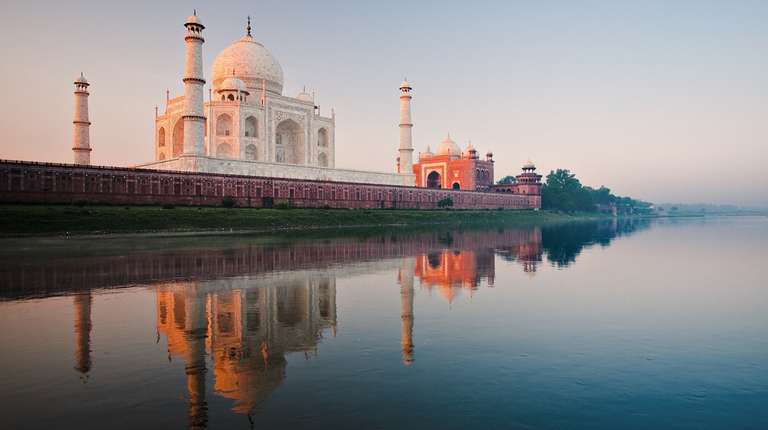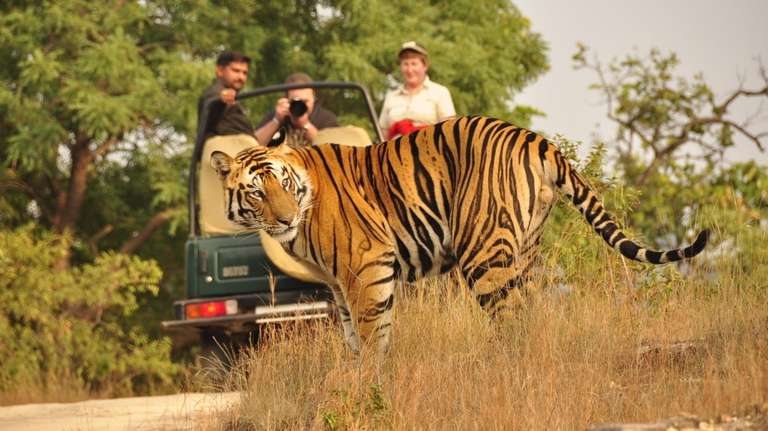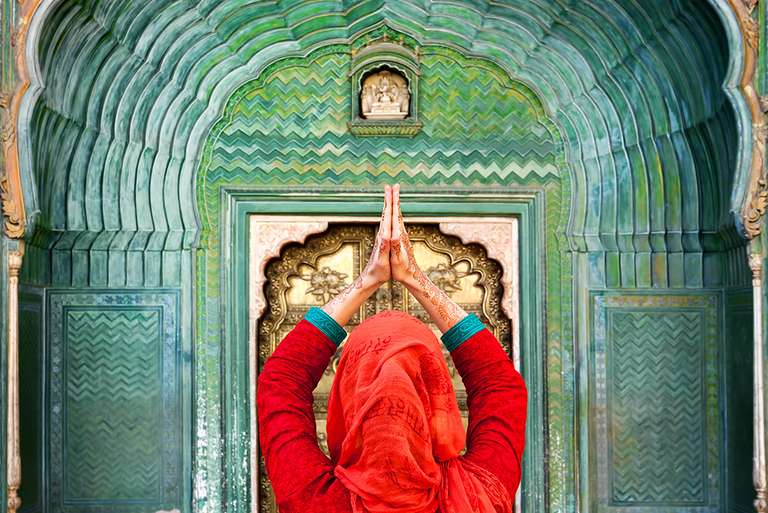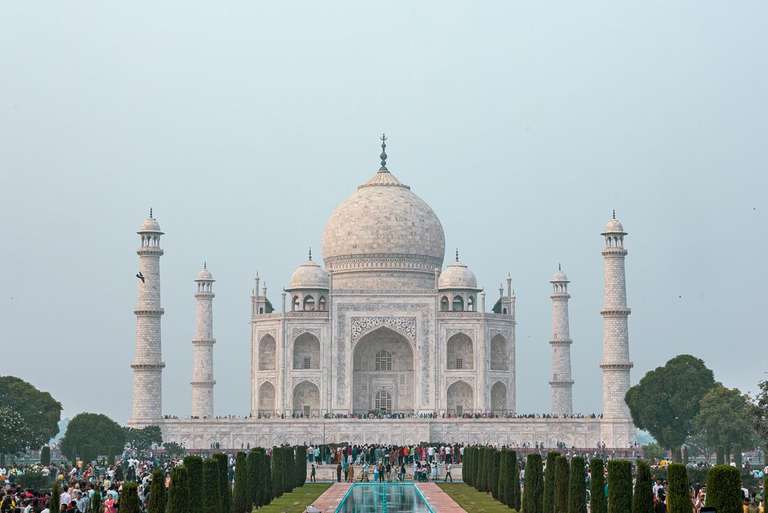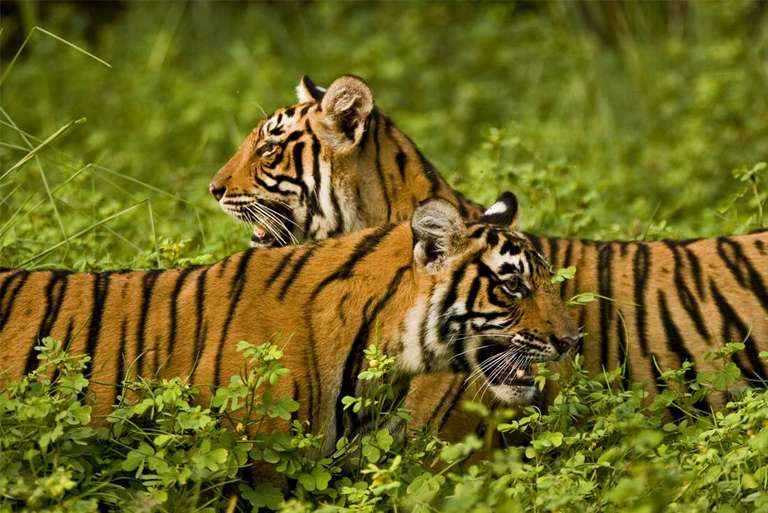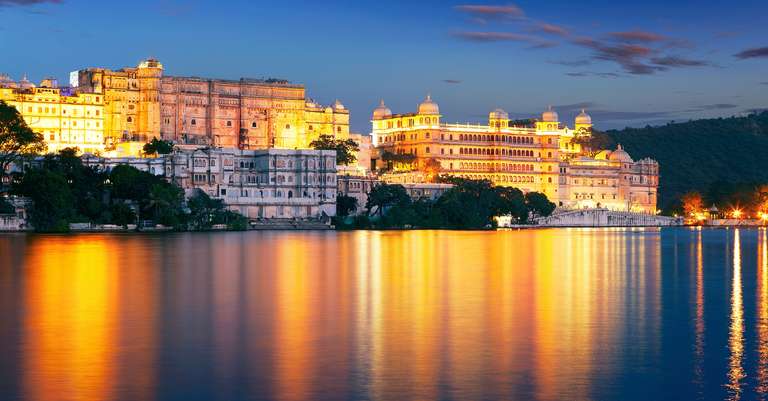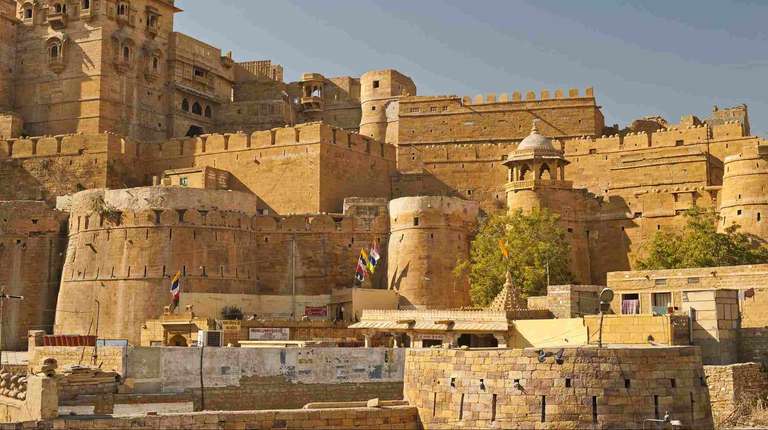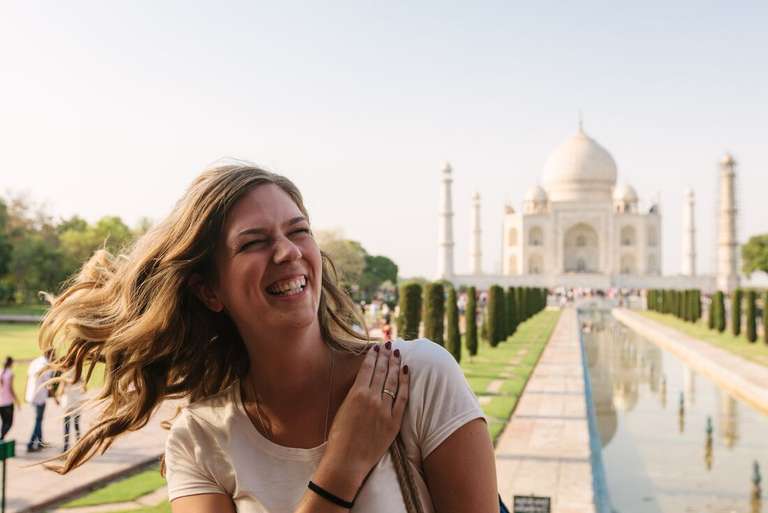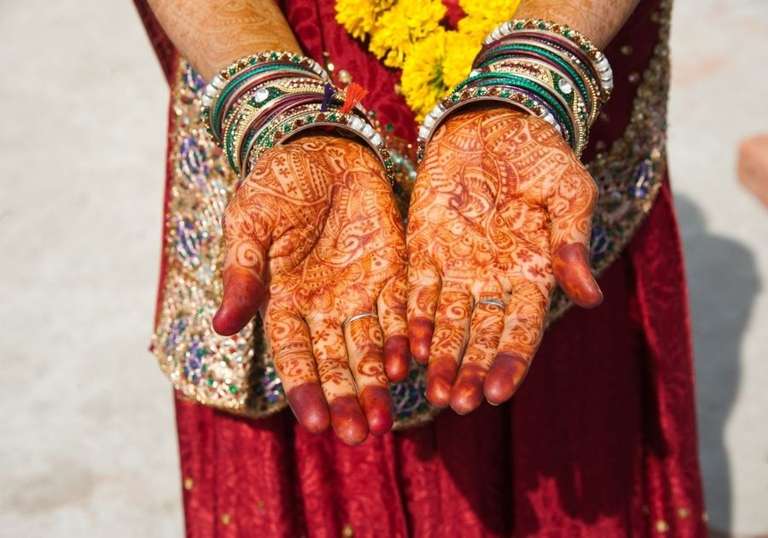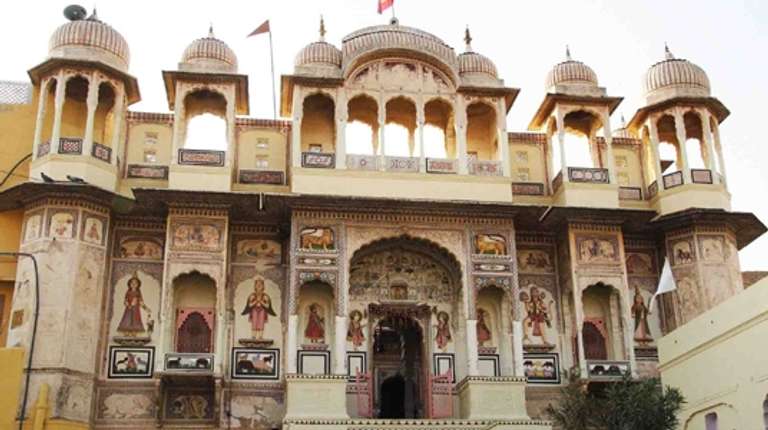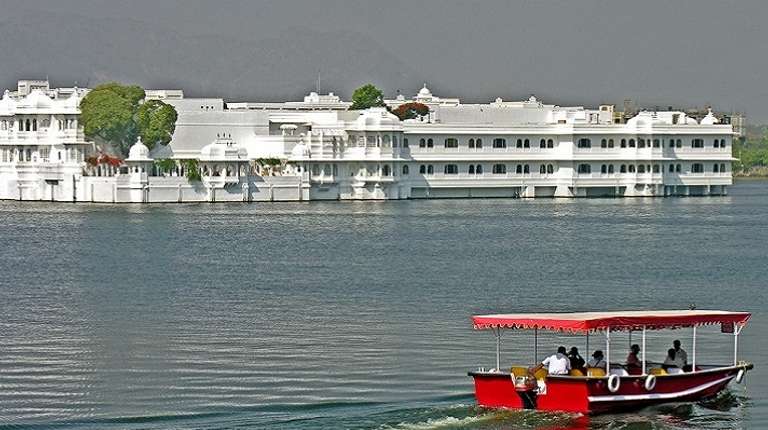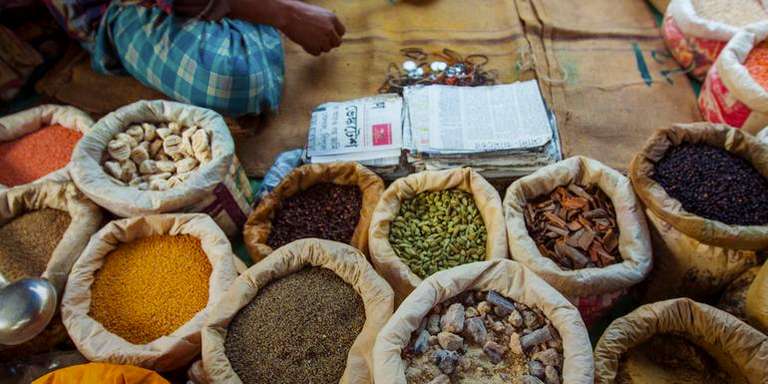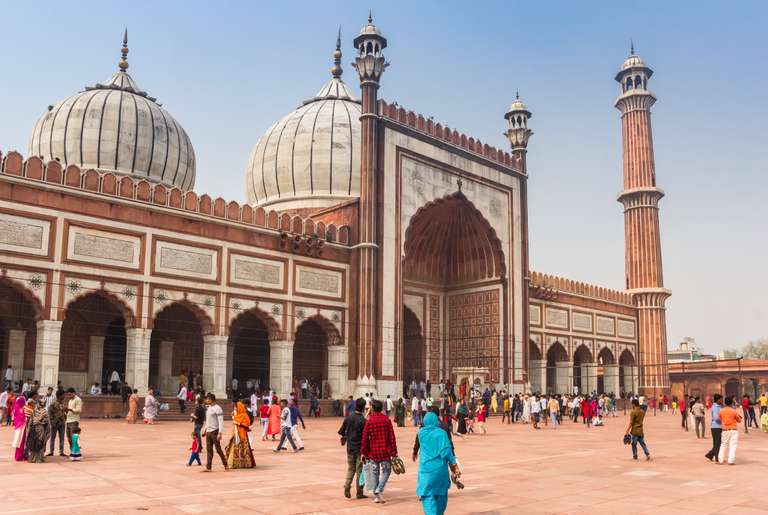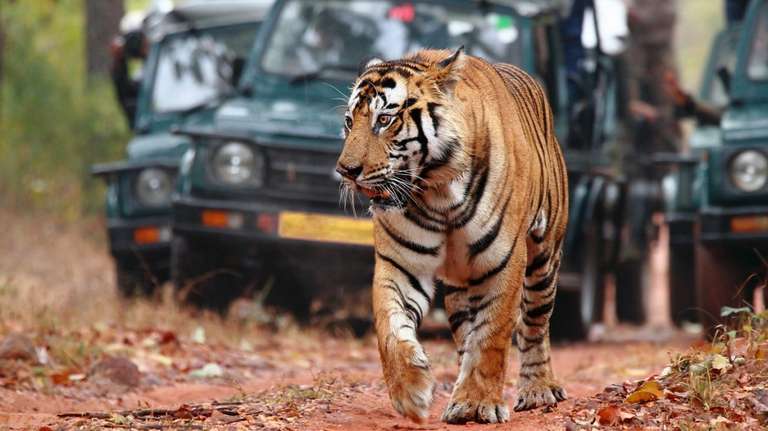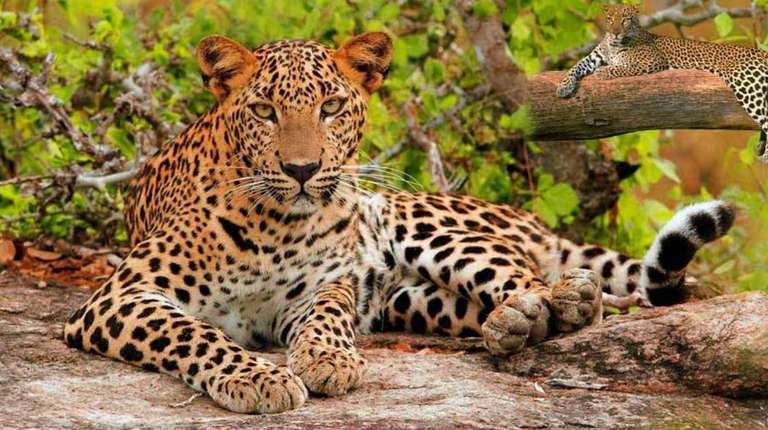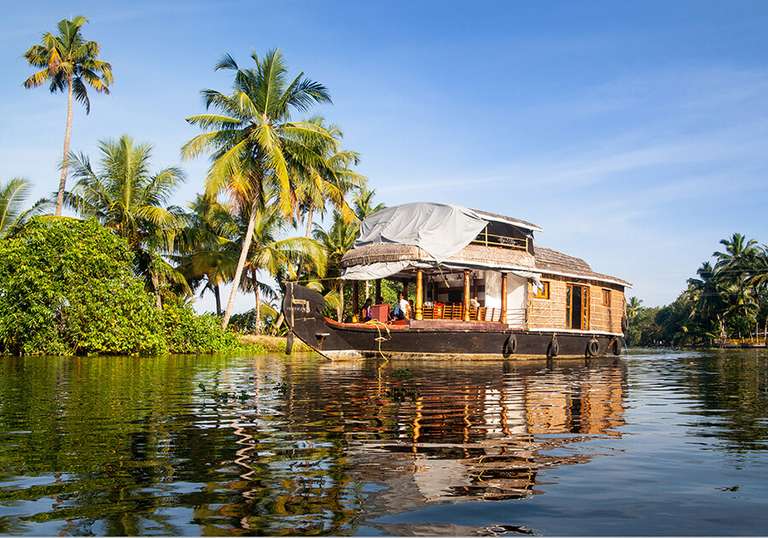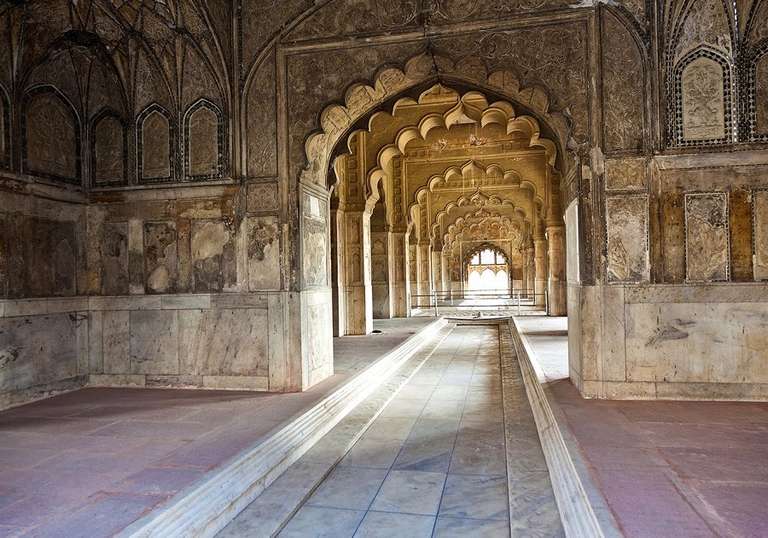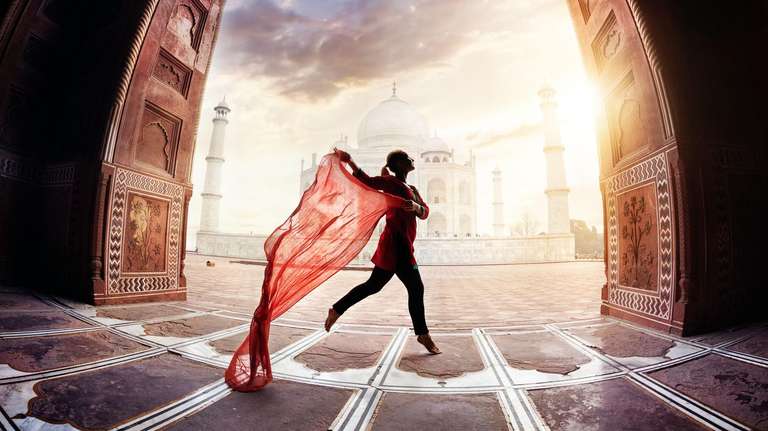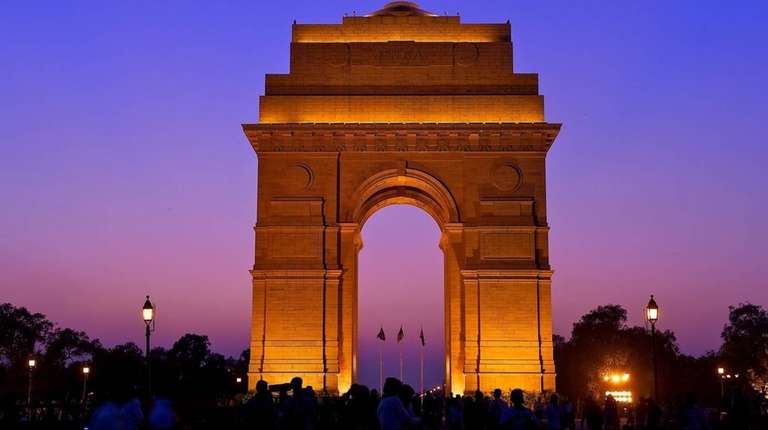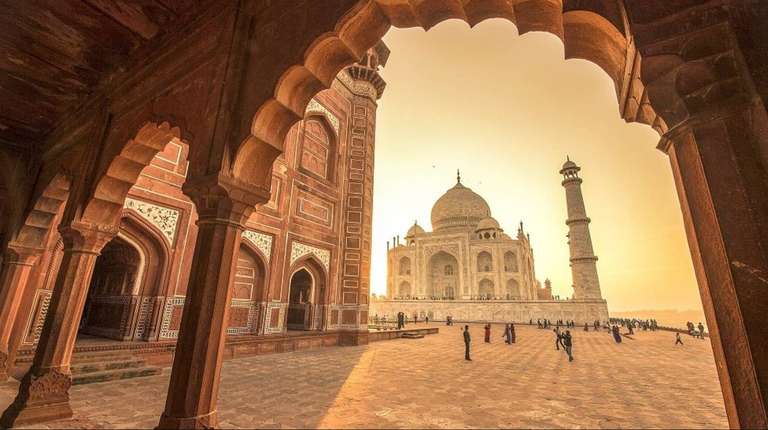Top 11 Places to Visit in Rajasthan

- Natalia
- From Russia
- Natalia
- From Russia
- natasa
- From Belarus
- Anna
- From Belarus
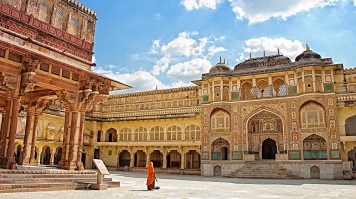
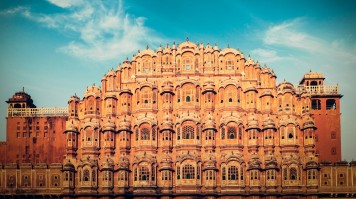
Jaipur, the capital of Rajasthan, is a flamboyant city that never thinks twice before showing off its ancient regalia and beautiful culture. Chaotic, brashy and edgy, Jaipur takes you from timeless bazaars that are as old as the city itself to modern day restaurants serving all kinds of cuisines, from historic palaces and forts whose tales and stories are as famous as their architectural beauty to luxe hotels, in a single day. Also referred to as the Pink City, for the color of its historic buildings, visiting Jaipur is most likely the best way to experience the glorious past of the Mughal Empire.
Highlights
- Witness the city from behind the latticed windows of the most famous Hawa Mahal, the ‘Palace of the Winds’.
- Fall in love with sculptures in Jantar Mantar, the world’s largest stone-built observatory.
- Explore the city’s lively bazaars.
- Get a sweeping view of the city from Amber Fort, when you are done appreciating the fort itself.
Best time to visit: The best time to visit is winter (October – March). Daytime temperatures are pleasant, but nights can be cold. During summer (April – June), temperatures can be punishingly hot; the monsoon is from July to September, but Jaipur receives relatively little rainfall. If possible, try to coincide your visit with Jaipur’s elephant festival, which is held in March every year.


A city glistening with sand-stone houses, palaces and forts, Jaisalmer is an oasis in the middle of a desert — Thar Desert to be exact. A major tourist magnet, the city is an opulent experience of culture, heritage, architecture and history. While the humongous Jaisalmer Fort is an unmissable sight and a major highlight, the ancient lanes and by-lanes have more enchanting havelis waiting to be discovered with their stories waiting to be heard. The desert city is also the most popular base for camel safaris into the Thar Desert, taking you through undulating dunes, exotic desert scenes, and quite possibly the best sunsets and sunrises you’ll ever see.
Highlights
- Visit Jaisalmer Fort, lose yourself in the labyrinthine warren of streets and seek out the havelis, extravagant mansions with intricate facades of lattice and floral design.
- Go on a scenic camel safari into the Thar Desert.
Best time to visit: October, when the weather is at its most amenable, is considered the best month to visit Jaisalmer. Summer (April – July) is unbearable, with temperatures in the high 40s. Monsoon season (August – September) doesn’t always see a large amount of rain, but the humidity is unpleasant.
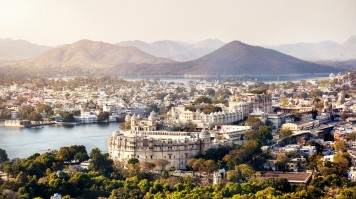
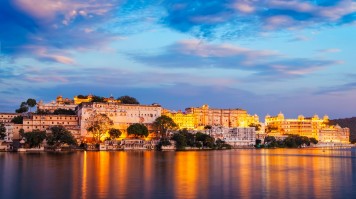
Udaipur, the land of lakes and palaces, really doesn’t need any introduction. Famous as the most romantic city in the country, Udaipur’s landscape always leaves you mesmerized. With neighbors like the serene Lake Pichola and the beautiful Aravalli hills, who wouldn’t feel beautiful and special! The city is dominated by its two prized jewels – the Lake Palace, an alluring palace-cum-hotel for the filthy rich, and the City Palace, an architectural jewel – but it also presents a fascinating art scene, old-world experiences, historic bazaars and tranquil boat rides. You could also spend your time exploring the 14th century Jain Temple of Ranakpur, considered to be one of the most beautiful temples in India, and enjoy a unique Light and Sound Show at the Kumbhalgarh Fort. Bookmundi recommends you to try and visit the Shilpgram crafts fair held in Udaipur each year. Rajasthan is famous for its handicrafts and textiles, and Shilpgram is one of the best destinations to see some of the best embroideries, hand-woven clothes and camel leather work.
Highlights
- Visit the City Palace,
- admire the serenity of Lake Pichola and watch Octopussy in one of the restaurants while you have a drink or a meal – part of this James Bond film was filmed in Udaipur, and most places have it playing on a loop.
Best time to visit: Try to visit in winter (October – March) when days are warm, and nights are cold. Summer (mid-March – June) is uncomfortably hot; the monsoon season (July – September) brings occasional heavy rain, thunderstorms and dust.

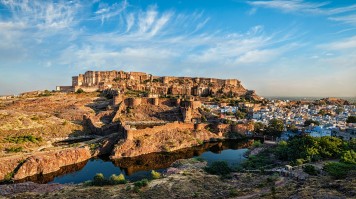
Huge fortress walls rise in stark contrast to the enchanting Thar Desert to protect the ancient city of Jodhpur, yet another Rajasthani gem famous for its palaces, temples, forts and bazaars. The majestic Mehrangarh fort is perhaps your first introduction to the city. After all, looking beyond its architectural brilliance can prove to be difficult. But, your best experiences in the ‘blue city’ are always found in its historic streets and lanes. Other places of interest include the Umaid Bhawan Palace, famous for its collection of vintage cars, murals, miniature paintings, clocks and art-deco interiors, and Jaswant Thanda, a beautiful memorial dedicated to Maharaja Jaswant Singh II. Before leaving the city, make sure you spend some time in its ancient bazaars and purchase some of those breathtaking antiques, carpets, textiles, leather goods and figurines.
Highlights
- Meherangarh Fort, perhaps Rajasthan’s most impressive and imposing, is the main draw here.
- The maze of streets in the old town is also worth exploring for a taste of traditional life in the city. The view of the old city from above is also not to be missed.
Best time to visit: The winter (October – March) is the best time to visit, and during this period there are several interesting festivals — bring warm clothes as temperatures are occasionally chilly. Daytime in summer (April – July) is hot, but evenings can be cool and pleasant. Monsoon season (July – August) is cooler than summer and less busy, but during this period, the city sees moderate rainfall.

Ranthambore is one of India’s best-known and most visited national parks. There is one good reason for this — although tigers are not present here in great numbers, they are well-accustomed to humans and tend to ignore the busloads of tourists, making them particularly easy to spot. Apart from the tigers, the park is characterised by evocative scenery and an abundance of other wildlife, making it well worth a visit.
Highlights
- While never guaranteed, you have a good chance of spotting a tiger in the wild here.
- The park is also home to many other species, including leopards, striped hyenas, sloth bears and crocodiles.
- The 10th-century UNESCO-listed Ranthambore Fort, for which the park is named, is also recommended.
Best time to visit: The park is open from October to June, but the best time to see tigers is from October to March. November is considered the best month of all.
6. Pushkar — The Holy ‘Lotus’ Town
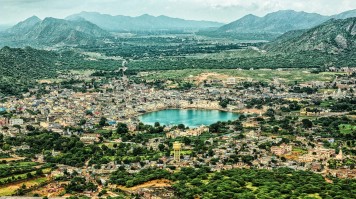
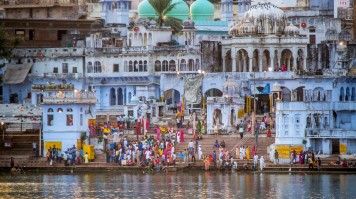
Although a part of Rajasthan, Pushkar feels entirely unique. Famous as a pilgrimage town, Pushkar revolves around an ancient lake which is believed to have appeared when Lord Brahma dropped a lotus. The town is also known to be one of the few destinations in the world having temples dedicated to Lord Brahma. That said, Pushkar’s popularity on the international stage is mostly because of the grand Pushkar Camel Fair, considered to be one of the most popular events in India. The fair attracts close to 200,000 people and 50,000 camels and it acts as a stage for the locals to buy and sell horses, cattle and camels, and become a part of traditional sporting events and mustache competitions. Tourists can have a blast exploring the unique scenes, taking part in exciting desert activities and exploring the Indian culture at its beautiful best.
Highlights
- The largest camel mela (camel market) in India is held annually just to the west of Pushkar.
- Two of the most unique are the Brahma Temple and the Savitri Temple.
Best time to visit: In terms of weather, the best time to visit is in winter (October – March) when temperatures are pleasantly cool. However, this is also the busiest time, especially during the mela, which takes place over 14 days around the full moon of November. The hotels are also at their most expensive. Summer (April – June) is uncomfortably hot; the monsoon season (July – September) is wet but can be fun since there are fewer tourists.
7. Bikaner — Gateway to the ‘Rat Temple’
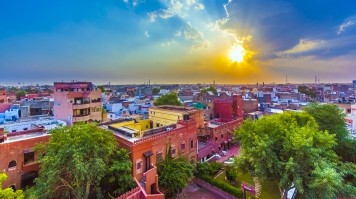

First impressions of Bikaner are not always positive. It is a crowded and noisy commercial city that receives far fewer visitors than the better-known tourist destinations in the state, and those making their way here can find it all rather overwhelming. However, if you dig a little beneath the surface, there are more than enough attractions to keep you busy for a few days. Bikaner is also the best base from which to visit the infamous ‘rat temple’, one of Rajasthan’s most unusual sights.
Highlights
- Junagarh Fort, containing fine decorations along with diverse curios and artefacts.
- Karni Mata temple, about 20km south of Bikaner — this temple houses hundreds of venerated rats believed to be reincarnated souls, that run free throughout the building.
- Bikaner is also an alternative base for Thar Desert camel treks.
Best time to visit: Winter (October – March) is the best season since the weather is cool and dry, although nights can be cold. Summer (April – June) is best avoided due to excessive heat. During the monsoon season (July-September), Bikaner receives moderate rainfall and humidity is high.
8. Chittorgarh — Former Capital of Heroic Rajput Kings

Chittorgarh is renowned as a stubborn outpost of Hindu resistance against the Muslim invaders, and its name is synonymous with Rajput heroism, bravery and valour. The imposing fort here stood against the invaders for many years, although it was taken three times. On one occasion, 13,000 women in the city committed johar by throwing themselves and their children onto a great funeral pyre in defiance of the conquering army. Today, most tourists arrive to see the UNESCO-listed fort.
Highlights
- The main attraction here is Chittorgarh Fort, possibly the largest of all Rajput defensive structures. Inside, you will find palaces, an archaeological museum and several ornate Jain temples.
Best time to visit: As long as you wrap up warm, winter (October – March) is the best time to visit; temperatures are cool, and the weather is dry. Summer (April – July) is excessively hot and the monsoon season (July – September) brings unpredictable deluges.
9. Ajmer — The City of Gods
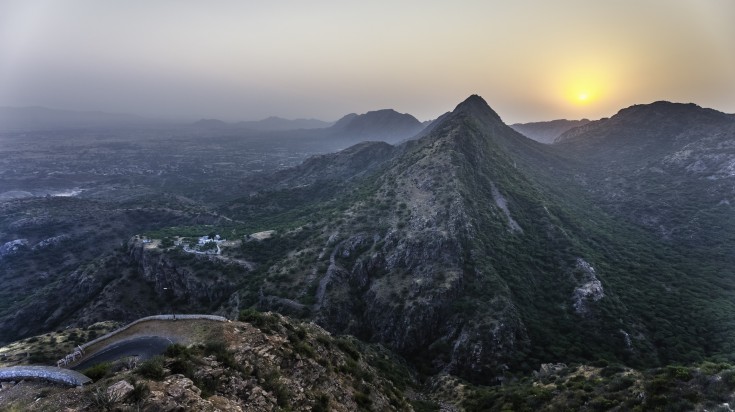
Ajmer is primarily known as the final resting place of Shah Khwaja Muin-ud-din Chishti, founder of the Chishtiya order. His tomb is now venerated as one of Islam’s holiest shrines and is considered the most important in India. Non-Muslims are permitted to visit the shrine complex, and the vibrant streets and bazaars around the tomb are also worth exploring. Just outside of town, on a hilltop, lies the Taragarh, the remains of a 2000-year-old fortress that once controlled the region’s trade routes.
Highlights
- The undisputed highlight here is the tomb of Shah Khwaja Muin-ud-din Chishti, and this is the main reason why people come.
- The rewarding hike up to the Taragarh is also popular.
Best time to visit: The best time to visit is in winter (October – February) when the weather is pleasantly cool. Summer is not recommended due to soaring temperatures of above 40° C. June to September is the monsoon season; this period sees some rain, but the region is also at its greenest.
10. Mount Abu — Rajasthan’s Only Hill Station

Mount Abu’s claim to fame is the fact that it is the state’s only hill station. The focal point is Nakki Lake, which was supposedly clawed out by the gods using their fingernails. The area is renowned for its picturesque scenery and there are plenty of opportunities for hiking and exploring the countryside. The other major attraction here is a Jain temple complex said to house possibly the most intricate marble carvings in the world.
Highlights
- The Jain temples are popular with foreign visitors and Indian tourists alike.
- Nakki Lake is a must visit. But come prepared for pedalos and ice creams rather than anything particularly spiritual.
Best time to visit: Due to the higher altitude, winter temperatures is lower than elsewhere (between 16 – 22° C) and nights can be cold. This is a good time to visit but bring the right clothes. Summer (mid-April – June) is slightly cooler than other major tourist destinations in Rajasthan, but this is also the busiest time; if you want to enjoy the peaceful mountain scenery, this period is best avoided. The monsoon rains here (August – September) are the heaviest in the state, but Mount Abu is at its lushest during this period too, and waterfalls are at their most spectacular.
11. Bundi — The Lesser Known
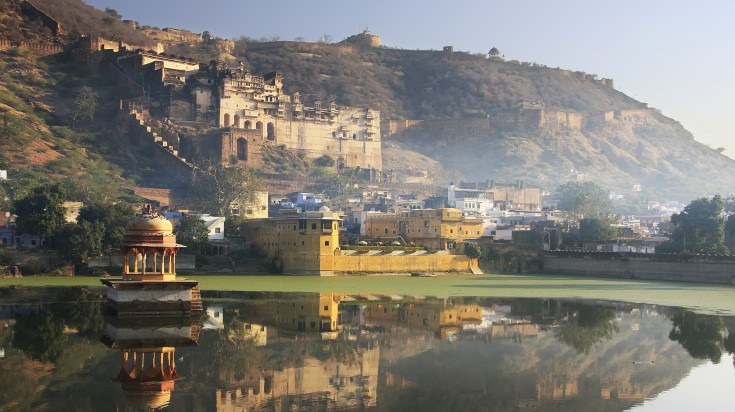
Bundi is one of Rajasthan’s lesser-known destinations and passes under the radar of many visitors to the state, but in its heyday, it was the capital of a major Rajput state. The town is largely untouched by tourism and is mostly free of modern developments. Its major attraction is the sublime palace, described by Kipling as ‘the work of goblins rather than of men’, and the beautiful murals contained therein. For a glimpse of a crumbling past that not many tourists witness, Bundi can prove to be a compelling destination.
Highlights
- The main attraction here is the palace and its famous murals.
- For the best views of the city, climb up to the hilltop fortifications of the Taragarh.
Best time to visit: Visit in winter (October – March) for the best weather, although come prepared for chilly temperatures. In summer (April – June), scorching temperatures can be brutal; the monsoon season (July – September) is wet and humid and is not recommended.
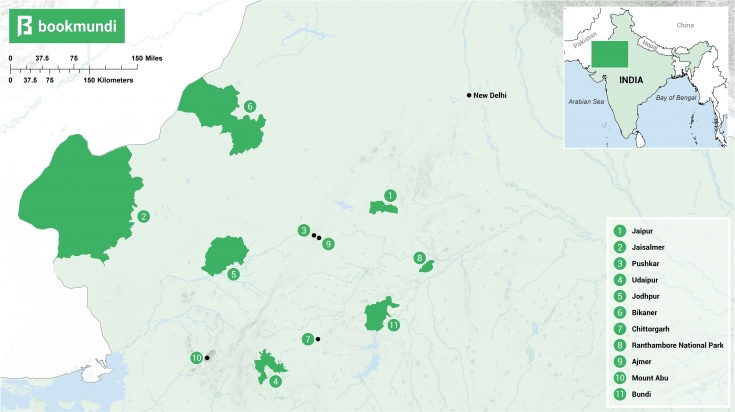
Traveling to India can often feel overwhelming and you always wonder if you’ve managed to cover the best experiences that it has on offer. Here's our advice — do not miss out on a Rajasthan tour! The number of unmissable sights and attractions in the state makes it quite impossible to see everything on a single trip, but that is a reason you should plan a second. Whenever that happens, Bookmundi has you covered! Connect with our Travel Expert in India to create a beautiful itinerary around Rajasthan.


